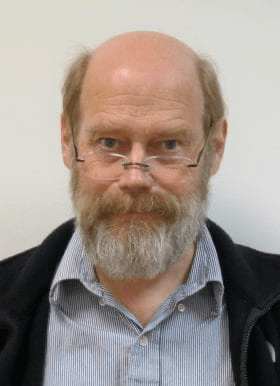Professor of Otolaryngology, Anatomy & Neurobiology
Research Interests
Research in my lab focuses on the development and regeneration of sensory receptors and afferent neurons in the inner ear. We are presently involved in several specific projects:
(1) We are studying the differentiation and patterning of sensory receptors in the inner ear, during both embryogenesis and regeneration. Our recent results have suggested that specific hair cell phenotype in the utricle is regulated -at least in part- by the GATA3 transcription factor. In order to test this hypothesis, we are using siRNAi methods to knock-down GATA3 in organ cultures of the regenerating utricle. Other studies have shown that the orientation of regenerated hair cells is dependent on activation of the PCP/JNK signaling pathway. Future work will be aimed at identifying the molecular signals that initiate the growth of stereocilia in the regenerating ear.
(2) Additional studies are aimed at characterizing the signaling events and pathways that govern the differentiation of auditory neurons. We have characterized neuronal development in the chick inner ear, focusing on the expression of NeuroD, GATA3 and Id-family transcription factors. We are presently exploring the role of GATA3 in the production of auditory neurons by (mis-) expressing GFP-labeled GATA3 in the otic vesicles of early-stage chick embryos.
(3) Many recent studies have shown that cell production and cell death in the nervous system are influenced by epigenetic events, such as histone acetylation and DNA methylation. We are exploring the role of epigenetic modification in the processes of hair cell regeneration and ototoxic injury. Small molecule inhibitors of histone deacetylaes (HDAC’s) are being tested for their ability to influence cell cycle entry in the mature ear and to prevent hair cell death after exposure to aminoglycoside antibiotics. Eventually, we hope to identify the specific genes that are regulated by histone modification.
(4) In collaboration with colleagues in the Washington University Department of Genetics, we have undertaken a large-scale screen of genes that are activated or repressed at specific time points during regeneration in the avian cochlea and utricle and in the development of the mammalian (mouse) ear. These studies utilize custom-fabricated cDNA microarrays that screen all identified transcription factors (~1,700, to date), as well as commercially-available gene arrays (Affymetrix) that screen ~30,000 individual genes. Data obtained from the microarray experiments are then confirmed using RT-PCR andin situ hybridization. Results from these projects have demonstrated the involvement of the PAX/EYA/SIX, JNK, TGF-b and Hedgehog signaling pathways in the development of various inner ear structures as well as in avian hair cell regeneration. Our current experiments are utilizing the technique of RNA interference (RNAi or siRNA) to knock-down the expression of selected members of the PAX/EYA/SIX and the JNK/C/EBPg pathways in cultures of isolated sensory epithelia, in order to further examine its role in regeneration. Additional experiments are using small molecule inhibitors of Hedgehog and JNK signaling to selectively block those pathways in similar culture preparations and in the developing chick ear in ovo. Quantitative gene array techniques will then characterize changes in the networks of transcription factor expression within proliferating and quiescent supporting cells
Professional Education
- BSc: University of Washington, Seattle, WA (Physics) 1981
- PhD: Northwestern University, Evanston IL (Neurobiology) 1989
Affiliations
- Otolaryngology
- Anatomy & Neurobiology

Warchol Lab
Role of macrophages in development, pathology and regeneration of sensory receptors in the mammalian inner ear and zebrafish lateral line.
